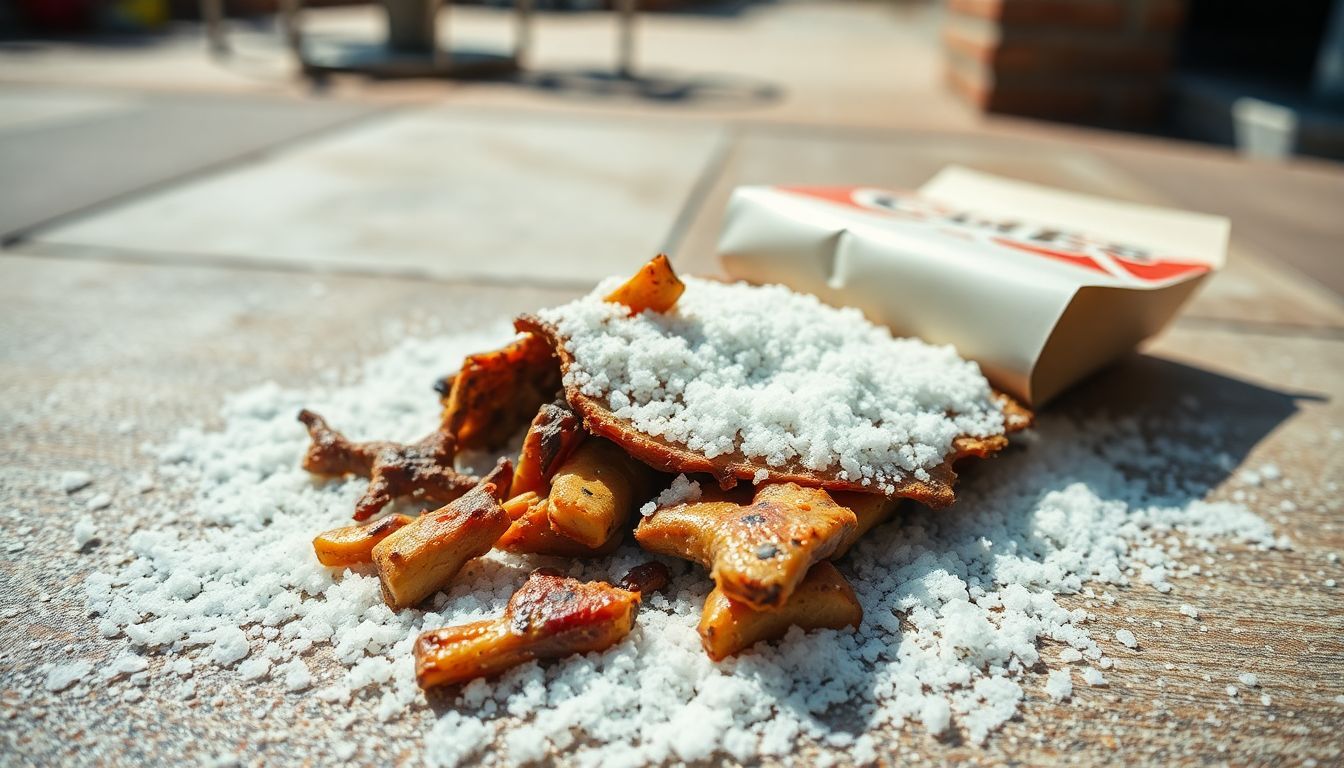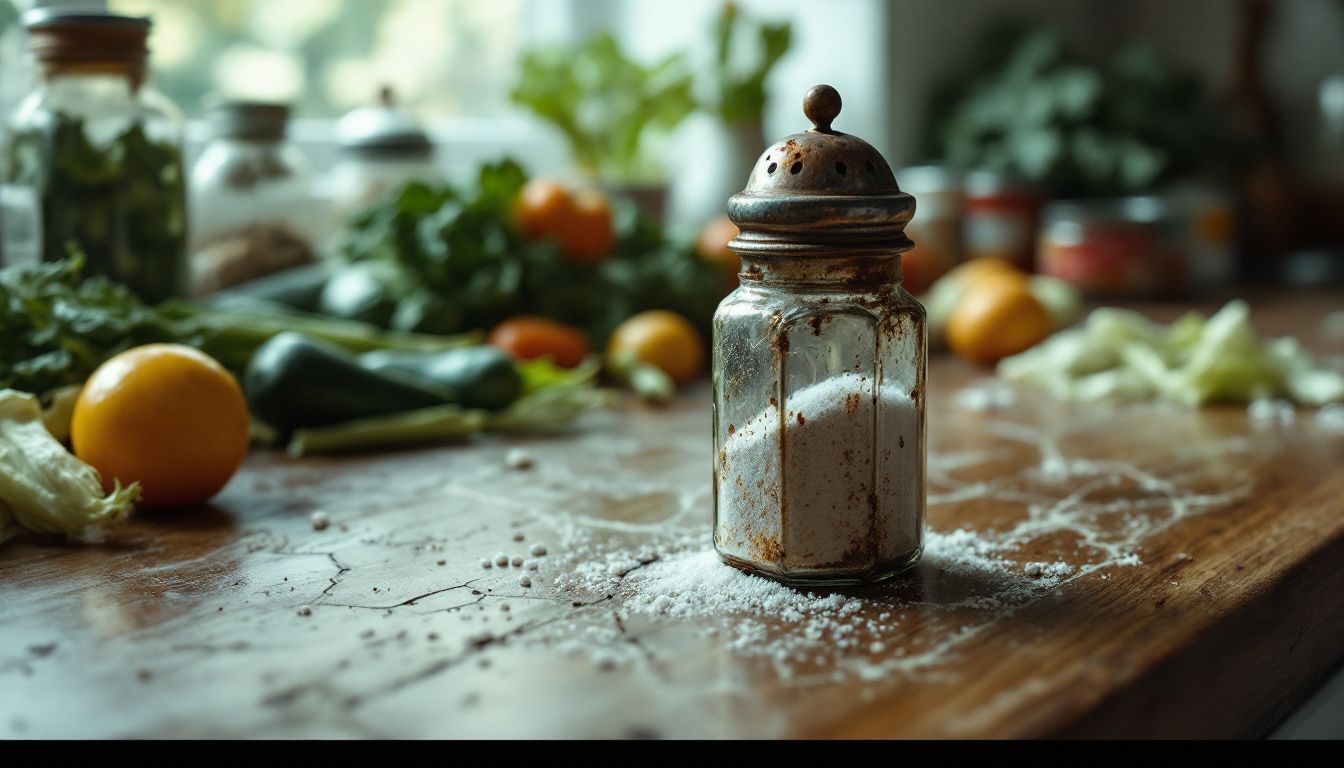Too much salt can harm your health. Studies show that cutting just one teaspoon of salt a day may lower systolic blood pressure by 6 mm Hg. This blog will explain the risks of high sodium intake and share tips for eating less salt.
Thank you for reading this post, don't forget to subscribe!Keep reading to protect your heart and feel better!
Key Takeaways
- Eating too much salt raises blood pressure and strains the heart, increasing the risk of heart disease and stroke. Lowering sodium intake by 1,500 mg daily can cut this risk by 25%.
- About 70% of dietary sodium comes from processed foods like canned soups, frozen meals, and salty snacks. Restaurant meals also pack high amounts of hidden sodium. Check nutrition labels to avoid these.
- A low-sodium diet can reduce systolic blood pressure by up to 7 mm Hg and prevent cases of coronary disease. The American Heart Association says even small reductions in salt have big health benefits.
- Use herbs, spices, lemon juice, or black pepper instead of table salt to flavor food. This helps lower sodium while adding antioxidants for better health.
- The Nordic diet focuses on fresh foods like fatty fish, root vegetables, barley, and berries. It cuts back on processed ingredients while boosting fiber and vitamins that improve heart health.
Health Risks of Excess Sodium
Eating too much sodium can strain your heart and raise your blood pressure. Over time, this puts you at risk for severe health problems like heart disease and stroke.
High blood pressure
High blood pressure, or hypertension, affects 1 in 3 adults in the U.S. It happens when systolic readings are over 130 mm Hg and diastolic readings hit 80 mm Hg or higher. Too much sodium intake plays a big role in raising these numbers.
About half of all Americans deal with high blood pressure, making it a major health concern.
Lowering dietary sodium helps reduce elevated blood pressure levels for many people. In one study, nearly 75% of participants saw their systolic blood pressure drop by an average of 7 mm Hg on a low-sodium diet.
Even those already on medications for high blood pressure experienced improvements from cutting down salt intake.
Reducing even small amounts of salt can make a big impact on heart health, says the American Heart Association.
Increased risk of heart disease and stroke
Too much sodium strains the heart and arteries. It leads to higher blood pressure, which forces the heart to work harder. Over time, this can damage blood vessels and make them stiff.
This stiffness increases plaque buildup, which blocks blood flow.
Over 90% of adults in America may face high blood pressure at some point. Cutting sodium to 1,500 mg daily could lower this risk by 25%. That change might prevent over one million deaths from stroke or heart disease within a decade.
Eating less salt also helps reduce water retention—a major factor in raising systolic blood pressure levels.
Benefits of a Low-Sodium Diet
Eating less salt helps protect your heart and lowers strain on your blood vessels. It also keeps your body balanced by reducing fluid retention.
Improved heart health
Cutting back on dietary sodium helps reduce high blood pressure. The American Heart Association says too much salt strains the heart. Lowering your intake by just 3 grams daily could prevent up to 120,000 cases of coronary disease each year.
Less salt means less risk of heart attacks and strokes.
African-Americans see the biggest gains but everyone benefits from reducing sodium levels. Over time, a low-sodium diet strengthens cardiovascular health for people of all ages. Small steps—like seasoning food with herbs instead of table salt—can make a big difference in keeping your heart strong.
Next, explore how cutting salt improves fluid balance and kidney function…
Better fluid balance and kidney function
Excess sodium can cause fluid retention, making your kidneys work harder. For people with chronic kidney disease (CKD), too much salt worsens symptoms and increases heart risks. A low-sodium diet helps reduce protein in urine—called proteinuria—and boosts the effects of kidney medications.
The human body only needs 500 mg of sodium daily to function. Eating less salt supports better fluid balance, which lowers swelling and strain on vital organs. Cutting out high-sodium foods like processed snacks or packaged meals is key for protecting your kidneys long-term.
Foods High in Sodium to Avoid
Many common foods pack in more sodium than you’d guess. These hidden sources can make cutting salt tougher—and impact your health.
Processed and packaged foods
Processed and packaged foods are loaded with sodium. Over 70% of dietary sodium in the U.S. comes from these items. Foods like canned soups, processed meats, frozen meals, and salty snacks contribute heavily to high blood pressure risks.
Common examples include bread, cereals, dairy products, and pre-made sauces like tomato sauce or gravies. Even “healthier” options may surprise you with their salt content. These foods can lead to heart disease, stroke, and fluid retention over time if consumed regularly.
Always check nutrition labels for hidden sodium!
Restaurant meals and fast food
Restaurant meals often pack a surprising amount of sodium. Over 90% of Americans eat more salt than recommended, and restaurants play a big role in this. In 2007-2008, about 25% of daily sodium intake came from eating out.
Dishes like the Boneless Buffalo Chicken Salad at Chili’s contain an astounding 4,780 mg of sodium—more than double the suggested daily limit.
Fast food isn’t any better. Items like burgers, fries, and pizzas are loaded with salt to boost flavor. These high-sodium choices can raise blood pressure and strain your heart health over time.
The CDC stresses keeping an eye on these foods for improved cardiovascular health. Cutting back on restaurant meals helps lower dietary sodium and support better overall nutrition goals.

Tips for Reducing Sodium Intake
Cutting sodium doesn’t have to be hard. Small changes, like tweaking how you season food or reading labels closely, can make a big difference!
Check food labels carefully
Look at the nutrition facts labels on packaged foods. Sodium levels can vary a lot, even in similar products. Pick options with “low sodium,” “reduced sodium,” or “no salt added” printed on the packaging.
Canned vegetables should say “no salt added.” Frozen vegetables are better without salty sauces. The American Heart Association’s Heart-Check mark helps you find heart-healthy choices that meet low-sodium criteria.
Always compare brands to choose one with less dietary sodium for better heart health and lower blood pressure risks.
Cook with herbs and spices instead of salt
Use garlic, onion powder, and paprika to add flavor without dietary salt. Rosemary and thyme work well with meats or roasted vegetables. These options enhance taste while helping lower systolic blood pressure.
Unlike table salt, herbs and spices provide health benefits like antioxidants.
Gradually reduce sodium by cutting back on the salt shaker each week. Start small—use lemon juice or black pepper in salads instead of dressings high in sodium. This approach helps adapt your taste preferences without feeling deprived.
Exploring the Nordic Diet: A Low-Sodium Alternative
The Nordic diet focuses on fresh, whole foods and skips processed options. It encourages eating barley, berries, root vegetables, and fatty fish like salmon or mackerel. These foods cut back sodium intake while providing fiber, omega-3s, and vitamins that boost overall health.
Low-fat dairy adds calcium without the extra salt found in some processed versions.
This approach helps lower blood pressure and supports heart health. Wild-caught seafood offers antioxidants for cardiovascular protection too. Swapping packaged foods with fresh fruits or dried beans can reduce dietary sodium drastically.
Herbs, spices, lemon juice—and not table salt—enhance flavor naturally while keeping meals heart-friendly!
Conclusion
Cutting back on salt can do wonders for your health. Lower sodium levels help reduce blood pressure, protect your heart, and improve overall wellness. Small changes, like swapping processed foods for fresh options or using herbs instead of table salt, can make a big difference.
Start small—your heart will thank you!
Discover how the Nordic Diet offers a heart-healthy, low-sodium alternative by exploring this in-depth guide.
